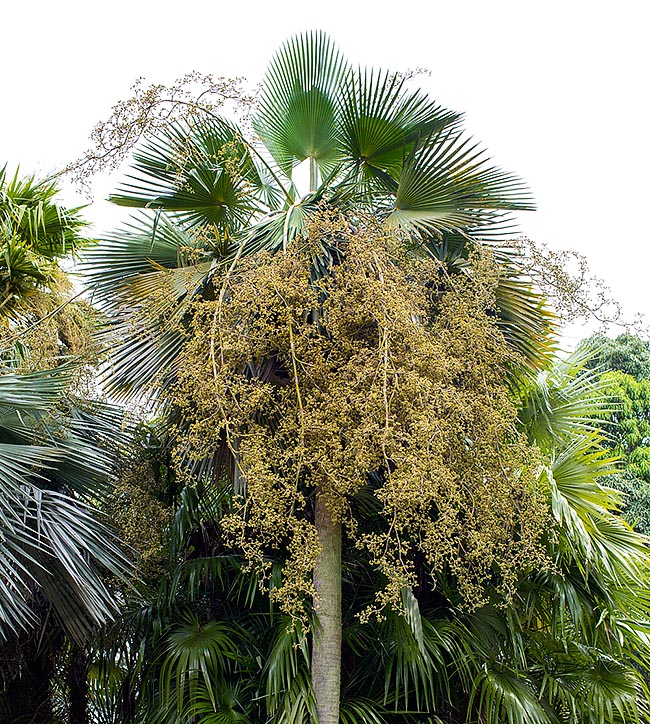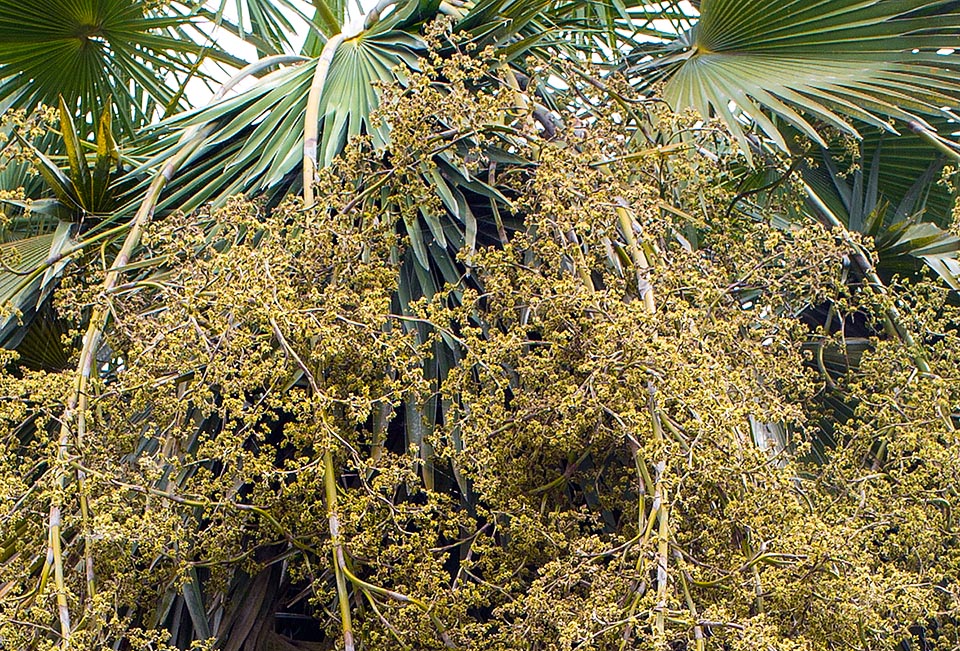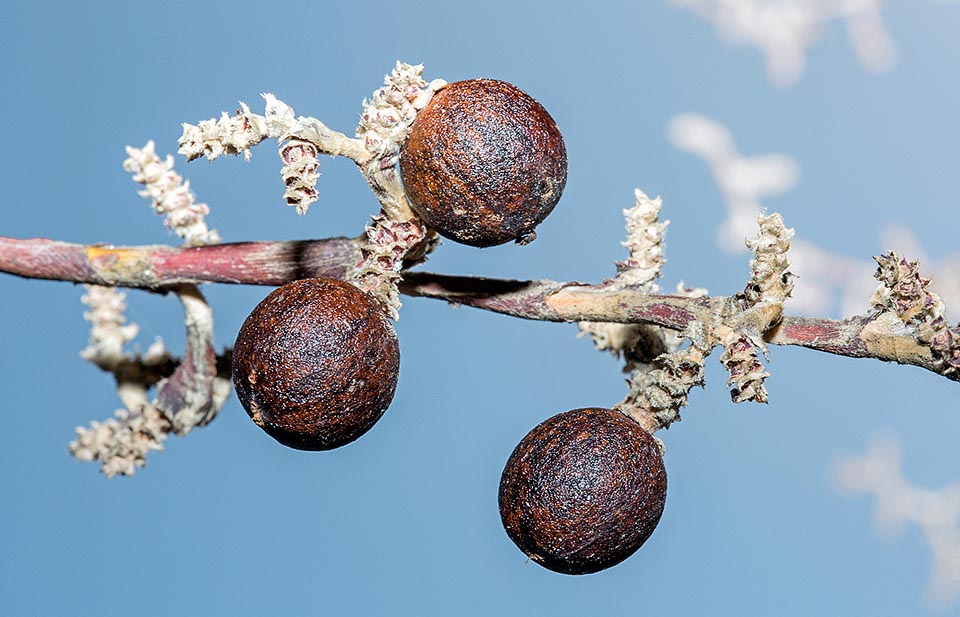Family : Arecaceae

Text © Pietro Puccio

English translation by Mario Beltramini

Frequent in Cuba and cultivated, Copernicia hospita reaches the 8 m of height © Giuseppe Mazza
The species is endemic to Cuba where is present, almost all over the island, in the open forests and coastal semi-arid savannahs at low altitude.
The genus is dedicated to the Polish astronomer Nicolaus Copernicus (1473-1543):the etymology of the specific name, the Latin substantive “hospita, ae” = host, has not been specified by the author, it is thought that it refers to the mass of peristent dry leaves that hosts small animals.
Common names: Cuban wax palm (English); guano cano, jata, palma jata, yarey, yarey hediondo, yarey de sabana (Cuba).
The Copernicia hospita Mart. (1838) is a very variable monoecious species, erect, solitary, rarely with basal buds, in nature 4-8 m tall, with cylindrical stem, of 15-30 cm of diameter, covered by the persistent foliar bases in the young plants, smooth and greyish in the adult ones.
The leaves, on a petiole provided on the margins of robust curved spines, 0,8-1 m long and 4-5 cm broad, are palmate, urbicular, without spines on the margins, of green grey to bluish colour and covered by a more or less thick white-greyish waxy patina on both sides.
The foliar lamina is incised in 60-70 rigid linear-triangular segments with acuminate apex and slightly toothed margins, up to more than 1 m long at the centre, united at the base for about half of their length.
Inflorescences between the leaves (interfoliar) that project out of the canopy, up to about 2,5 m long, with 6 orders of ramifications covered by whitish tomentum and floriferous rachillae, 0,8-2 cm long, thickly hairy. Close hermaphroditic flowers, usually solitary, less frequently in couple, about 0,5 cm long, of cream colour, with trilobed campanulate corolla externally covered by thick and short hairs, 3 carpels and 6 stamina with the wide filaments united at the base.
The fruits, that usually develop from only ne carpel, are globose, of 1,8-2 cm of diameter, black when ripe, containing only one globose seed of about 1,5 cm of diameter.

The ramified inflorescences, even 2,5 m long, bear a multitude of tiny hermaphroditic cream flowers © Giuseppe Mazza
It reproduces by seed, previously kept in water for two-three days, in draining sandy loam maintained humid at the temperature of 26-28 °C, with germination times starting from one month.
Slow-growing species diffused in nature and also in cultivation, due to the particular colour of the leaves and the thick wax covering them, more than any other Cuban species, similar to the less known Copernicia glabrescens that differs, besides the absence of hairs on the ramifications of the inflorescence, for the green leaves and the total, or almost, absence of the waxy patina.
Of great ornamental and landscape effect as isolated specimen or in group in the gardens of the tropical, subtropical and marginally milder temperate warm climate regions, where when adult it may stand occasional values of temperature around -1 °C, provided short-lasting.

The globose fruits, if 1,8-2 cm of diameter, are black when ripe and contain only one globose seed of about 1,5 cm © Giuseppe Mazza
It requires full sun since the first stages of its growth and is not particular about the soil, from slightly acidic to slightly alkaline, provided perfectly draining, well rooted it may stand drought periods, but grows best if regularly irrigated in the zones characterized by a long warm and dry season. Useful are the fertilizations with products balanced with short release microelements for a faster growth and a more lush look. It tolerates the marine aerosols, hence it can be employed in gardens close to the sea.
The dry leaves are utilized as cover of rural dwellings and for realizing hats, bags, baskets, brooms and othe common use handicrafts; the stems, resistant and long lasting, are employed in the constructions and for fences.
Synonyms: Copernicia escarzana León (1931).
→ For general notions about ARECACEAE please click here.
